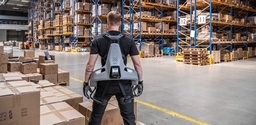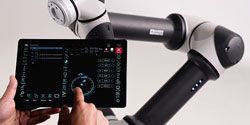Wearable Robotics and Exoskeleton Technology
Through onboard intelligence and cloud connectivity, Exia delivers personalized support, injury prevention, and ergonomic optimization - essentially becoming a smart, adaptive partner for physical work.
Utilizing Cobots to Manage Labor Shortages
By replacing manual CNC processes with the RB series cobots, the company has increased productivity by 40 to 50 percent. This has enabled the company to respond more effectively to client demands, which have increased two to three times since the recent semiconductor boom.
Using Technology to Combat the Skilled Labor Shortage
Successful manufacturing companies are combatting the skilled labor shortage by investing in automation and software to complement their existing workforce, meet production requirements, and attract new talent.
Records 1 to 3 of 3
Featured Product

Basler 3D Vision Solutions for Robotics and Warehouse Automation
Empower your robot's vision: with our 3D cameras and tailored robotics application software, your robot can tackle any task. From bin picking to sorting and navigation, AI enables your robot to recognize even "unseen" objects in mixed scenarios. Explore our time-of-flight and stereo cameras for vision-guided robotics with a wide range of compatible accessories."
Robotics and Automation - Featured Company

PNY
PNY Professional Solutions provides customers with powerful tools to manage heavy workloads. PNY offers NVIDIA Professional, Consumer GeForce RTX, and Data Center GPU Solutions, along with PNY Memory upgrades and Solid-State Drives. All PNY products are designed and built with system integrators in mind to provide advanced application performance, top productivity, and greater power efficiency.



